Content from the Brookings-Tsinghua Public Policy Center is now archived. Since October 1, 2020, Brookings has maintained a limited partnership with Tsinghua University School of Public Policy and Management that is intended to facilitate jointly organized dialogues, meetings, and/or events.
The new U.S. administration has been widely castigated for policy dysfunction, an insurgent view of international alliances and trade, and worrying signals about its approach to core democratic institutions. However, write Bruce Jones and Jonathan Pollack, a very different dynamic has emerged on North Korea policy, arguably the most urgent national security challenge the administration confronts. This piece originally appeared in Nikkei Asian Review, and was later edited for the publication’s print version.
Amid the sound and fury of President Donald Trump’s first weeks in office, the new U.S. administration has been widely castigated for policy dysfunction, an insurgent view of international alliances and trade, and worrying signals about its approach to core democratic institutions.
Numerous commentators argue that the president is leading by instinct and tweet, rather than through a deliberate policy process drawing upon talented and experienced senior officials and the professional bureaucracies that exist to support them. The growing war of words between the White House and the U.S. intelligence community looms as another major worry.
However, a very different dynamic has emerged on North Korea policy, arguably the most urgent national security challenge the administration confronts. This is something of a surprise.
During the election, some of candidate Trump’s sharpest departures from traditional Republican foreign policy concerned his open questioning of America’s Asian alliances, especially the suggestion that Japan and South Korea should acquire their own nuclear weapons, rather than continue to rely on American security guarantees. This message roiled both Tokyo and Seoul and shook the stability of East Asian peace.
When the president-elect met with then-president Barack Obama two days after the election, the North Korean nuclear challenge was among the lead items in the handover discussion. Obama warned Trump that Kim Jong Un’s accelerated pursuit of nuclear weapons and missiles would preoccupy the new administration.
Trump’s response was soon apparent. Even before taking office, the president-elect and his team continued the North Korea discussion with Obama and outgoing senior national security officials. Trump also reportedly requested and received intelligence briefings on the country’s growing nuclear capabilities.
Equally important, Trump’s first foreign policy statement after the election sought to reassure South Korea about the continuing American commitment. Before he resigned as national security adviser in February, Michael Flynn spoke with senior officials in Seoul and Tokyo and stressed continuity in U.S. security guarantees. He also met in New York with South Korean counterpart Kim Kwan-jin.
Trump then sent Defense Secretary James Mattis to South Korea and Japan in the first overseas trip by any member of the new cabinet. Mattis offered private and public reassurances in both countries while warning Pyongyang that the American response to any nuclear provocation would be “effective and overwhelming.” These steps assumed particular significance in Seoul, still deeply enmeshed in the political crisis over the impeachment of President Park Geun-hye.
These moves also elicited additional steps by Beijing. Although China continues to oppose the U.S. decision to deploy the Terminal High Altitude Area Defense missile defense system on the peninsula, there is a renewed urgency in Chinese commentaries on the nuclear issue. An editorial last week in Communist Party newspaper Global Times ominously characterized the Korean Peninsula as “probably at its most dangerous time and as close to being out of control since the end of the Korean War.” China’s recent suspension of coal imports from North Korea for the remainder of 2017 made a virtue of necessity in that Beijing was rapidly approaching the allowable annual levels permitted under a U.N. Security Council resolution adopted last November.
The move however clearly signals that China sees the need for a coordinated strategy to impose additional costs on North Korea. The decision imposes clear limits on the North’s export earnings, and has triggered unprecedented criticism of China in North Korean media, including remarks about “a neighboring country dancing to the tune of the U.S.”
Engagement with China
Meanwhile, Trump and key cabinet secretaries, including Secretary of State Rex Tillerson and Treasury Secretary Steven Mnuchin, have sought through meetings and phone calls with Chinese counterparts to repair damage from the president’s earlier statements on the U.S. “One China” policy. Before his call to make amends with Chinese President Xi Jinping, Trump had argued that the U.S. position on Taiwan should be in play to induce Beijing to make concessions on trade issues, but this was unproductive. Even setting aside that feint, openly challenging China on economic issues while sustaining cooperation on North Korea nevertheless remains a very tricky path for the Trump administration.
Trump however has clearly recognized the risks of a severe, quite possibly profound crisis on the Korean Peninsula. He has adjusted his thinking in a quiet, careful fashion that has included repeated consultations with the intelligence community.
Trump however has clearly recognized the risks of a severe, quite possibly profound crisis on the Korean Peninsula.
With the exception of one tweet responding to an exaggerated North Korean claim that it can reach the continental U.S. with an intercontinental ballistic missile, Trump has remained sober and focused. For those wondering whether the Trump White House is capable of careful deliberation over complex, high-risk security issues, the Korean Peninsula provides a welcome example.
None of these developments makes the options in front of Trump any easier. Three previous presidents devoted substantial energy to preventing the emergence of a North Korean nuclear weapons capability and all three largely failed. The near-simultaneous launching of four ballistic missiles on Monday morning, with all landing within 200 miles of Japan’s coastline, underscored North Korea’s increased capacity to target neighboring states. Although the latest tests did not fulfill Kim’s threat to test a missile able to reach the American mainland, they demonstrated that North Korea has every intention to persist with weapons programs opposed by nearly all other states.
A genuine debate persists among experts about whether engagement, pressure or some combination of the two can alter North Korea’s determination to sustain its unrelenting pursuit of nuclear weapons. Some in the expert community believe that there is no alternative to “soft” regime change—the use of tougher sanctions, isolation and pressure from China and other surrounding powers to eventually induce a change in leadership, not just a change of behavior. However, this presumes a long-term, high-risk process with no guarantee of success.
To address the full range of possibilities, the Trump administration has launched a review of policy options. In the aftermath of the North’s brazen assassination of Kim Jong Nam, Kim Jong Un’s half-brother, with lethal chemical agents at Kuala Lumpur International Airport, measures under consideration reportedly include restoring Pyongyang to a list of state sponsors of terrorism, reversing its 2008 removal. Additional steps purportedly include increasing restrictions on North Korean financial and commercial activities and heightened military measures to address potential crisis contingencies.
Most of the scenarios in the Korean Peninsula range from dangerous to horrific. This process will continue to test the new administration. Given projected timelines in Pyongyang’s nuclear and missile development, President Trump could face an early decision on whether to shoot down or otherwise disable a North Korean long-range missile, very possibly triggering an even larger military crisis on the peninsula. His administration also has an urgent need to fill out its ranks with senior appointments at the departments of state and defense. The president and cabinet officers can set the policy framework, but policy coordination and implementation requires that the fully functioning machinery of government stand behind the policy.
All policy options on the peninsula are bad. It is nonetheless heartening that the president shows keen awareness of the scale of the challenge and the need to approach North Korea with deliberation and resolve.
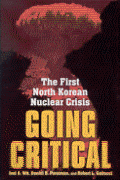
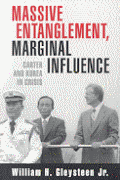
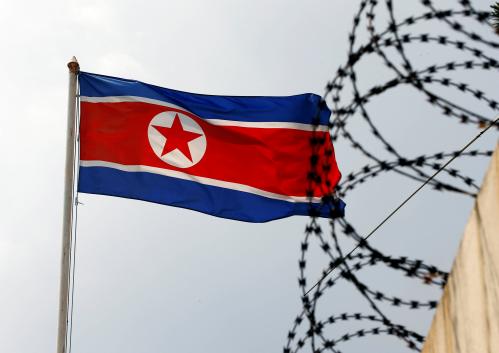
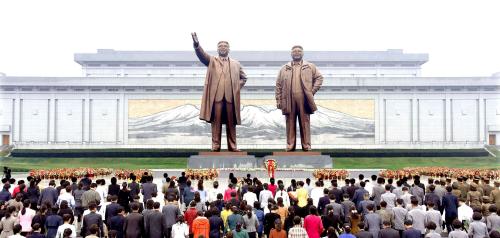
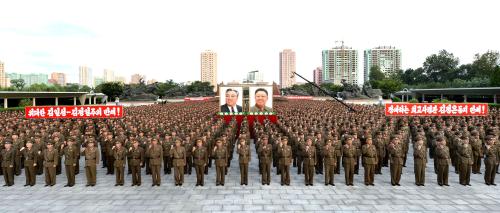

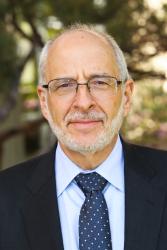
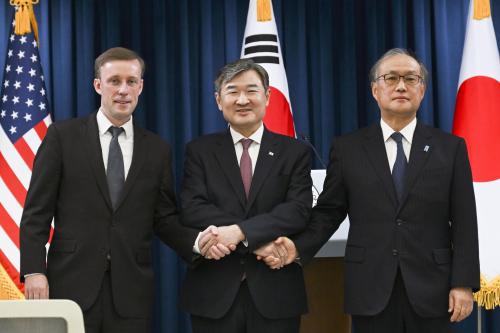
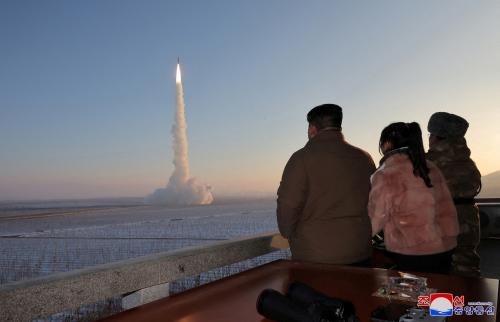
Commentary
North Korea threat brings out Trump’s serious side
March 7, 2017